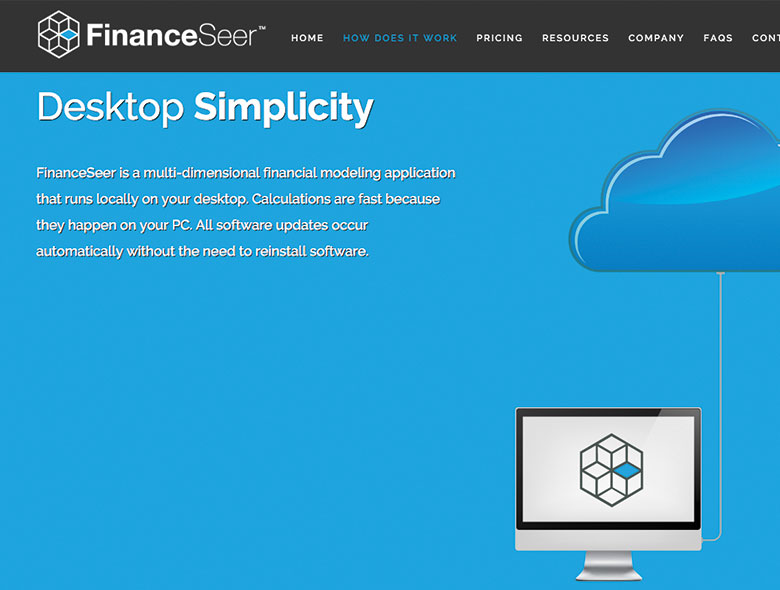Spellbrand Blog
Blue Ocean Brand Strategy – Unlock Your Branding Potential

Overview of the Blue Ocean Strategy
The Blue Ocean Strategy is a business theory that encourages companies to move beyond battling competitors in existing markets and instead focus on creating new markets, which are called “blue oceans.”
These markets are untapped and free from competition, unlike “red oceans,” where competitors fight over a shrinking profit pool. The strategy is about pioneering market spaces where the demand is created rather than fought over.
Importance of Innovation
In a rapidly changing business environment, innovation is more than a luxury; it is necessary. Companies that stick only to competing within traditional frameworks often find themselves in a race to the bottom, where price wars dominate and differentiation diminishes.
Innovating beyond the competition means adding features or services, rethinking business models, and finding new ways to deliver value that completely reshapes industries.
Objective of this Article
This article aims to guide you through the fundamentals of the Blue Ocean Strategy, illustrating its principles with modern examples from various industries.
You will learn how to apply the strategy to your business context, understand the tools for crafting a Blue Ocean, and explore the potential challenges and rewards of venturing into new market spaces.
Whether you’re a startup entrepreneur or a seasoned executive, these insights will equip you to think more broadly about innovation and market creation.

Understanding the Blue Ocean Strategy
Definition and Origin
“Blue Ocean” originates from the seminal book Blue Ocean Strategy by W. Chan Kim and Renée Mauborgne, first published in 2005. The authors use the metaphor of the blue and red ocean to describe the market universe.
Blue oceans represent unexplored market space, free of competition, where demand is created rather than fought over. These markets are characterized by ample growth opportunities and the potential for highly profitable ventures.
The idea is to break away from the competition by creating products or services without direct competitors.
On the other hand, red oceans represent all the industries today — the known market space. In red oceans, industry boundaries are defined and accepted, and the competitive rules of the game are known.
Companies try outperforming their rivals to grab a greater share of existing demand. As the market space gets crowded, prospects for profits and growth diminish, resulting in a bloody “red” ocean of rivals fighting over a shrinking profit pool.
Core Principle
The core principle of the Blue Ocean Strategy is about moving beyond competing in existing markets and instead creating new markets, thereby making the competition irrelevant.
This strategic shift challenges companies to transcend the traditional boundaries of competition and rethink how they approach their markets. Instead of beating the competition, businesses should focus on “value innovation,” a critical component of the Blue Ocean Strategy.
This concept is about innovating in ways that combine differentiation and low cost, creating value for the company and its customers.
Value innovation is achieved when companies align their processes and offerings to tap into unmet needs and demand, creating new value for buyers and introducing lower costs through reduced waste and focused operations.
This dual focus allows companies to survive and thrive in new markets without having to compete head-to-head with other firms. The Blue Ocean Strategy encourages companies to explore beyond conventional boundaries and redefine market limits, creating a leap in value for the company, its buyers, and its employees.
The transition from red to blue oceans is not merely about market discovery but also market creation. This strategy requires a shift in perspective from competing within established market constraints to reconstructing market elements in innovative ways that accumulate new wealth in the form of growth and profits.
By applying the Blue Ocean Strategy, companies can simultaneously achieve differentiation and low cost, unlocking new demand and making the competition irrelevant. This approach has the potential to transform the competitive landscape of industries and redefine the parameters of market success.

Key Components of the Blue Ocean Strategy
Value Innovation
Value innovation is the cornerstone of the Blue Ocean Strategy and represents a paradigm shift from traditional competitive strategies. Traditional competitive strategies focus on battling competitors within existing market constraints.
They emphasize outperforming rivals to gain a greater share of the product or service market, often leading to an escalation of cost structures and a decrease in profit margins. This approach typically results in incremental improvements and does not necessarily create additional value for the consumer.
In contrast, value innovation challenges the status quo by simultaneously pursuing differentiation and low cost. Instead of beating the competition, value innovation focuses on making the competition irrelevant by creating a leap in value for both customers and the company. It entails delivering high value to customers at a reduced cost, creating new demand, and opening up new markets.
Value innovation is achieved by aligning innovation with utility, price, and cost positions. This alignment involves introducing products or services that not only stand out in the marketplace but are also produced at a lower cost structure.
This unique approach does not aim at serving just the existing customers better; it targets non-customers of the industry and unlocks new demand, thereby expanding the market boundaries.
The strategic logic behind value innovation is straightforward yet powerful: by creating value for the consumer, the company opens up new and uncontested market space. This strategy requires a deep understanding of what buyers value and aims to break free of conventional competitive factors.
It transforms what is offered to the market by looking beyond the accepted boundaries of competition, focusing on new factors that matter most to current and future customers.
Eliminate-Reduce-Raise-Create Grid
The Eliminate-Reduce-Raise-Create (ERRC) Grid is a practical framework that helps companies systematically approach the creation of blue oceans. This grid pushes companies to act on all four actions suggested by its name to break free of the traditional trade-offs between differentiation and low cost in a red ocean strategy.
Eliminate: This action forces companies to determine which factors the industry takes for granted should be eliminated. These aspects of the current offering no longer have value or may even detract from value according to changing customer preferences or technological advancements. By eliminating these factors, companies can dramatically reduce costs and simplify the product or service offering.
Reduce: This action encourages companies to identify factors that should be reduced well below the industry’s standard. It involves cutting back on overdesigned or overly complex features that are not commensurate with the costs they incur or the value they add from the customers’ perspective. Reducing these factors helps to streamline operations and lower the cost structure.
Raise: This action involves identifying and amplifying factors that should be raised above the industry standard. These could be features or functionalities that enhance the consumer experience but have been underemphasized or overlooked by competitors. Raising these factors serves to increase differentiation and customer value.
Create: The final action pushes companies to create factors the industry has never offered. This involves innovating to introduce new elements to create new value for the consumer. These factors help to define new market spaces and make the company’s offerings distinctively appealing.
The ERRC grid aids in reorienting a company’s strategic focus from competitors to alternatives and from customers to non-customers of the industry. This framework is not merely about being different or low-cost; it’s about being both in a way that redefines market boundaries and creates a blue ocean of uncontested market space.
By employing the ERRC grid, companies can rethink the fundamental aspects of their offerings, align their activities towards achieving differentiation at a lower cost, and, thus, implement the principles of value innovation. This strategic move supports sustainable growth and enables companies to escape the fiercely competitive red oceans in favor of more profitable and expansive blue oceans.
Examples of the Blue Ocean Strategy
Technology Sector Example: SpaceX
SpaceX is a quintessential example of the Blue Ocean Strategy applied in the technology sector. Before SpaceX, the space industry was dominated by national governments and a few large defense contractors, all operating within a tightly regulated and highly competitive market.
SpaceX entered the scene with a radical approach: to make space travel more affordable and ultimately enable human life on other planets.
SpaceX’s key value innovation was the development of reusable rocket technology, which dramatically reduced space travel costs. Traditional rockets were designed for single use and cost tens to hundreds of millions of dollars each launch.
By designing rockets that could return to Earth and be reused for multiple flights, SpaceX has cut down launch costs and increased the frequency and reliability of space access. This has opened up new possibilities for satellite deployment, space research, and commercial space travel, effectively creating a new market space where they face minimal competition.
Moreover, SpaceX has leveraged its position to foster partnerships with NASA and other governmental agencies, positioning itself as a viable and cost-effective alternative to traditional space missions. This strategic move into uncharted territories exemplifies a Blue Ocean Strategy, where instead of competing in an existing industry, a company redefines the parameters of the industry itself.
Consumer Goods Example: Beyond Meat
Beyond Meat has transformed the consumer goods sector by pioneering the plant-based meat industry. Traditionally, the meat industry has been saturated with deeply ingrained consumer habits and significant environmental and ethical concerns.
Beyond Meat seized the opportunity to differentiate itself by offering a product that caters to vegetarians and vegans and appeals to meat-eaters looking for healthier and more sustainable alternatives.
Beyond Meat’s innovation lies in its ability to create plant-based products that mimic real meat’s taste, texture, and cooking experience. This has allowed the company to discover a new niche in a red ocean of traditional meat producers.
By targeting niche consumers and mainstream meat-eaters, Beyond Meat has expanded the market and created a new leader position. This strategy has been bolstered by growing consumer awareness of health and environmental issues, driving demand for plant-based products that were once considered a compromise on taste and quality.
Service Industry Example: Zoom
Zoom has reshaped the service industry by capitalizing on the remote communication space, particularly highlighted during the COVID-19 pandemic. Before the pandemic, the market for online communication tools was competitive, featuring giants like Microsoft’s Skype and Google Hangouts. However, many of these tools were either too complex for average consumers or not robust enough for enterprise needs.
Zoom changed the game by offering a platform that was easy to use and provided reliable, high-quality video conferencing features that could scale from individual use up to large enterprises. During the pandemic, Zoom became synonymous with remote communication for work, education, and personal purposes, effectively creating a new market space by becoming the go-to solution for various user segments.
The simplicity of Zoom’s interface and its ability to handle large numbers of participants without significant loss in quality made it a preferred choice for users worldwide. This ease of use, effective marketing, and timely improvements in security and functionality allowed Zoom to outpace its competitors and thrive in a newly emerging market space that it helped define.
In each of these examples—SpaceX, Beyond Meat, and Zoom—the companies have applied the principles of the Blue Ocean Strategy by creating new demand in uncontested market spaces, making the competition irrelevant. They have shifted the focus from competing within traditional boundaries to redefining them and expanding the market.
Implementing the Blue Ocean Strategy
Implementing the Blue Ocean Strategy involves systematically redefining market boundaries and creating new demand. Three critical tools facilitate this process: the Strategic Canvas, the Buyer Utility Map, and Non-Customer Analysis.
Each tool provides a framework for visualizing opportunities and crafting innovative strategies.
The tool images below belong to the owner.
Strategic Canvas
The Strategic Canvas is a central diagnostic and action framework for building a compelling Blue Ocean Strategy. It serves as a visual representation that maps out the current competitive factors in the industry and shows where competitors invest and where they compete. By laying this out in a clear, graphical format, companies can easily see the strategic profile of their industry and how their offerings compare.
To use the Strategic Canvas, businesses plot the key factors the industry competes on and assess their current offerings against those factors. This includes product features, service components, delivery speed, pricing, and technological innovation.
The resulting graph displays the “value curves” of different market players, illustrating their strategic focus and market positioning.
Businesses can then identify where the market is overcrowded and where gaps represent opportunities for differentiation. By repositioning their value curves away from those of the competition, businesses can shift their strategic focus from competing based on existing factors to creating new elements that deliver greater value.
The strategic canvas helps businesses challenge the conventional boundaries of competition and realign their resources to focus on new, uncontested market spaces.
Buyer Utility Map
The Buyer Utility Map is another powerful Blue Ocean Strategy arsenal tool. This tool helps companies to systematically explore every facet of the buyer’s experience to identify potential blocks to utility and opportunities for innovation.
The map consists of six stages of the buyer’s experience cycle—purchase, delivery, use, supplements, maintenance, and disposal—and looks at six utility levers companies can pull to enhance buyer value at each stage. These levers include simplicity, convenience, risk reduction, fun and image, environmental friendliness, and cost.
Using the Buyer Utility Map, companies can pinpoint where customers experience the most significant pain points or feel unmet needs. For example, if the purchase process is overly complicated or using the product requires substantial effort, these areas are ripe for innovation.
By focusing on these under-served aspects of the buyer’s experience, companies can develop unique features or services that significantly differentiate their offerings from those of competitors and create new value for buyers.
Non-Customer Analysis
Non-customer analysis is crucial for uncovering the hidden opportunities within those not purchasing from your industry. There are typically three tiers of non-customers. The first tier includes “soon-to-be” non-customers on the edge of your market, using your products only out of necessity.
The second tier consists of “refusing” non-customers who consciously choose alternatives over what your industry offers. The third tier encompasses “unexplored” non-customers who have never considered your market’s offerings an option.
Understanding why these non-customers stay away from current market offerings provides invaluable insights into how the market can be expanded. Companies can use this analysis to discover key commonalities among non-customers that point to broader trends or overlooked needs. By focusing on these insights, businesses can create new products or modify existing ones to address these unmet needs, thereby converting non-customers into customers and expanding the market.
Visual Exploration
Visual exploration focuses on engaging directly with the environments and contexts in which potential non-users operate. This immersive approach allows businesses to observe and interact with people outside the consumer base in their natural settings, with the goal of better understanding their behaviors, preferences, and unmet needs.
Importance of Field Research
Field research through visual exploration is crucial because it provides real, unfiltered insights into the daily lives and challenges non-users face. This approach can reveal why existing solutions do not appeal to them and what barriers prevent them from engaging with the industry’s offerings.
Tools and Techniques
Several tools can facilitate visual exploration effectively:
- Mind Mapping: This tool helps visually organize information about non-users’ thoughts and needs, capturing insights from field observations in a structured way.
- Visual Storyboarding: Creating storyboards to depict the non-user’s day or interaction with potential solutions can help them understand and vividly communicate their experiences and pain points.
- Buyer Personas: Developing detailed audience personas based on observed data can help create targeted strategies that address specific groups’ behaviors and preferences.
- Culture Probes: These are kits or tools given to non-users to record specific aspects of their lives, providing insights into their cultural and environmental context.
Employing these methods can help companies develop a nuanced understanding of non-customers, leading to more effective strategies for turning them into new markets.
The Four Action Framework
The Four Action Framework is a strategic tool designed to reconstruct market boundaries and create new value for the business and its customers. It is structured around four key actions—raise, create, reduce, and eliminate—that serve to redefine the elements of the offering to stand out from the competition.
Implementing the Four Actions
- Raise: Identify which factors or attributes of the product or service should be enhanced beyond the industry’s standards. This could involve increasing quality, adding features, or improving customer service, all of which aim to elevate the buyer’s experience and satisfaction.
- Create: Focus on developing entirely new factors the industry has never offered. This might include innovative features, unique services, or novel customer engagement methods to differentiate the brand and attract new buyers.
- Reduce: Determine which aspects of the product, service, or business process can be scaled back without significantly impacting customer satisfaction. This might involve simplifying the product lineup, reducing less-valued features, or streamlining operations to cut costs.
- Eliminate: Critically assess which industry-standard factors are no longer relevant or valued by consumers and could be completely removed. This helps not only further to reduce costs but also to differentiate the offering by shifting away from outdated norms.
Strategic Benefits
Applying the Four Action Framework allows a business to realign its resources and focus on creating a unique value proposition. This strategic clarity not only helps carve out a new market space but also makes the competition irrelevant. By focusing on what truly matters to the consumer and eliminating wasteful practices, companies can leap in value innovation, setting the stage for sustainable growth and profitability in their newly created blue ocean.
Challenges and Considerations
Implementing the Blue Ocean Strategy is not without its challenges and complexities. While the strategy provides a powerful framework for creating uncontested market spaces and driving innovation, it also requires careful execution and ongoing management to sustain success and avoid potential pitfalls.
Sustainability of Blue Oceans
Creating a Blue Ocean is the first step; sustaining that uncontested market space is equally critical. As Blue Oceans becomes successful, it inevitably attracts competitors who can turn the clear blue waters red.
To sustain their competitive advantage, companies must consider the following:
- Continuous Innovation: Companies must continue to innovate to stay ahead of potential competitors. This doesn’t just mean new products or services; it also means innovating processes, customer experiences, and business models. Continuous innovation helps maintain the uniqueness that defines a Blue Ocean.
- Build Barriers to Imitation: Companies can sustain their Blue Oceans by creating barriers that deter competitors. This could include technological advancements, high levels of brand loyalty, unique business cultures or practices, or patents and trademarks that protect proprietary elements.
- Renewal and Expansion: Constantly exploring new segments within the market and expanding the boundaries of the existing market can help sustain a Blue Ocean. This involves understanding emerging customer needs and adapting to changes in the market environment.
- Value Reinforcement: It’s crucial to reinforce the value proposition to customers continually. This can be done through marketing, customer relationship management, and consistently delivering on the brand’s promises, ensuring that the value always aligns with customer expectations and desires.
Risks and Pitfalls
While the Blue Ocean Strategy is compelling, several risks and challenges must be managed to avoid failure:
- Misreading the Market: One of the most significant risks is misinterpreting market signals or consumer desires, leading to innovations that don’t align with what customers want or need. Thorough market research and customer engagement are critical to mitigate this risk.
- Organizational Resistance: Implementing a Blue Ocean Strategy often requires significant changes in a company’s strategic focus, which can meet with internal resistance. Change management practices are essential to ensure buy-in from all levels of the organization.
- Execution Failures: A well-planned Blue Ocean Strategy can fail due to poor execution. This can result from inadequate resources, lack of expertise, or failures in communicating and aligning the strategy throughout the organization.
- Scaling Prematurely: Another common mistake is scaling the new venture too quickly without adequately understanding the new market dynamics or having a robust operational base. This can lead to overextension and failure.
- Neglecting Core Markets: Companies must not neglect their existing markets while pursuing new opportunities. Balancing focus and resources between managing the current business and innovating new blue oceans is crucial for overall stability and long-term success.
Strategic Considerations
Finally, it’s important to maintain strategic flexibility when deploying the Blue Ocean Strategy. Companies must be prepared to pivot and adapt their strategies in response to market feedback and changing conditions. Regularly revisiting and potentially revising the strategic approach allows businesses to stay relevant and maintain their competitive edge in new and existing markets.
Summary of Key Points
The Blue Ocean Strategy offers a transformative approach to market competition by encouraging companies to create new, uncontested market spaces, making the competition irrelevant. The key components include:
- Value Innovation: Central to the Blue Ocean Strategy, this concept focuses on overcoming traditional competitive factors and simultaneously achieving differentiation and low cost. This creates a leap in value for both the company and its customers.
- Strategic Canvas: A visual tool that helps companies see their current market position relative to competitors and identify new opportunities for innovation.
- Buyer Utility Map and Non-Customer Analysis: These tools help companies understand the deeper needs of current and potential customers, identifying unmet needs and areas for potential market expansion.
- Four Action Framework: This framework involves four key strategic moves—eliminate, reduce, raise, and create—to help redefine market boundaries and focus on factors that significantly drive value.
- Visual Exploration: This directly engages non-customers to glean insights into their behaviors and needs, providing a foundation for innovative strategies.
When effectively applied, these elements enable companies to discover, explore, and capture blue oceans of uncontested market space.
Call to Action
As you reflect on the Blue Ocean Strategy, consider how these principles can be adapted and applied within your business context. Think about the existing red oceans in your industry—areas where competition is cutthroat and margins are thinning.
How might you apply tools like the Strategic Canvas or the Buyer Utility Map to discover new angles and opportunities? Encourage your team to think beyond the conventional boundaries of your current market.
Start with small experiments to test ideas derived from these strategic tools, gradually scaling successful innovations.
The journey to finding your Blue Ocean isn’t just about market leadership—it’s about creating value in innovative and efficient ways that are hard for competitors to replicate.
Additional Resources
Further Reading
To deepen your understanding of the Blue Ocean Strategy and its applications, consider exploring the following resources:
- “Blue Ocean Strategy” by W. Chan Kim and Renée Mauborgne is the foundational book that introduces and explains the principles and tools of Blue Ocean Strategy. Read More.
- “Blue Ocean Shift” by W. Chan Kim and Renée Mauborgne: This follow-up to their original book provides further insights and real-world examples of how organizations have successfully applied Blue Ocean strategies. Read More.
- Harvard Business Review articles on Blue Ocean Strategy: These articles often explore nuanced applications of the strategy and offer updates on new research and case studies. Read More.
Tools and Services
Several tools and services can assist businesses in implementing Blue Ocean strategies effectively:
- Strategyzer: Offers tools like the Business Model Canvas and Value Proposition Canvas, which can complement Strategic Canvas in exploring new value propositions.
- MindMeister: Useful for mind mapping during brainstorming sessions, especially useful in the visual exploration phase.
- Gartner and Forrester: Access to detailed market research reports and insights to help understand industry trends and customer needs, supporting effective non-customer analysis.
Leveraging these resources and tools can provide valuable support as you navigate your path toward discovering and exploiting new market spaces, helping to transform competitive landscapes and redefine how value is created and delivered in your industry.

Mash Bonigala
Creative Director & Brand Strategist
With 25+ years of building brands all around the world, Mash brings a keen insight and strategic thought process to the science of brand building. He has created brand strategies and competitive positioning stories that translate into powerful and stunning visual identities for all sizes of companies.
Featured Work
See Our Work in Action
Real brands, real results. Explore how we've helped businesses transform their identity.
Client Love
What Our Clients Say
Don't just take our word for it. Hear from the brands we've worked with.
Liana Alexander Raye
Harlequin Starr International Styles
"Working with the Spellbrand team has been incredibly easy. Mash has a team of experts who are extremely visionary and pioneering, pulling together ideas and initial thoughts into an actual brand giving you options that you feel best align with your thought process. I have no idea how they created my brand based on the vague brief I gave them, but they have worked wonders and magic. Their design, attention to detail, willingness to ensure the final product is exceptional all counts towards a company who has the client at the forefront of mind at every step of the way. Spellbrand is my Number 1 go to for all branding, website and design concepts moving forward. I look at them as an extension to our marketing arm. Just brilliant."
Joe Russell
VALENSOR
"Mash and his team were amazing. They were able to take our vision and produce a truly creative and unique branding package. What struck me most was their desire to make our company happy alongside ensuring our company has good branding. Mash was always willing to answer our questions and help us arrive at a decision. Overall, SpellBrand is not just creating company names and logos, they are creating character and soul for their clients' companies. I would recommend them to anyone looking to stand-out among their competitors. SpellBrand services are most definitely worth their weight in gold."
Related Services You Might Love
Based on what you just read, here are services that can help you achieve similar results for your brand.
Keep Reading
Related Articles
Nov 19, 2025
What are paths and anchor points in Adobe Illustrator?
Master the fundamentals of paths and anchor points in Adobe Illustrator. Learn how these essential tools work together to create professional logo designs and vector graphics.
Read MoreNov 17, 2025
Use Of Color In Creating Logo Designs
Master the psychology of color in logo design. Learn how colors influence perception, build brand recognition, and create emotional connections with your audience.
Read MoreNov 17, 2025
Developing a Jewelry Logo
Learn how to create a jewelry logo that captures elegance and sophistication. Discover design strategies, typography choices, and color palettes that work for jewelry brands.
Read More

